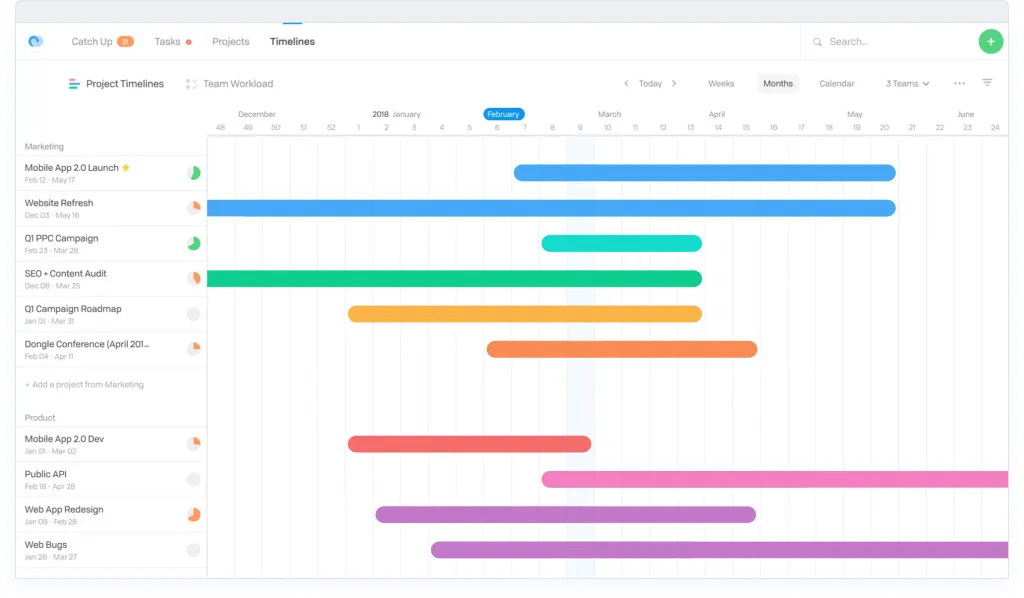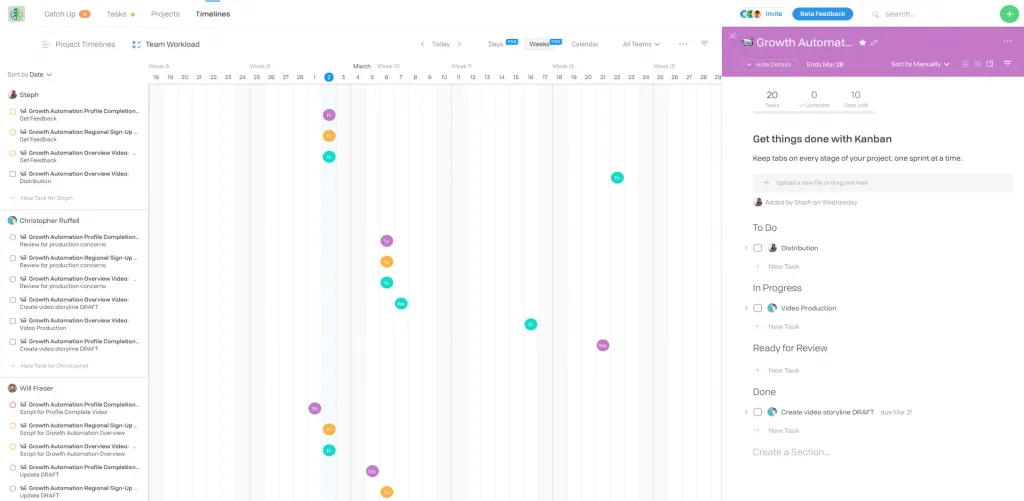How we made our marketing project management less painful with Flow
Of all the headaches that a modern, sophisticated marketing operation has to deal with these days, one of the biggest has to be project management.
As recently as five years ago, marketers at most companies were operating in siloed marketing departments, with well-defined roles and dedicated resources. Today, the lines between marketing and other functions are blurring. At some companies, “marketing” also increasingly means “product” and “support,” and marketers constantly find themselves sharing projects, tools and resources with numerous other departments.
As teams become more cross-functional, amorphous and nimble, the opportunities for project management headaches multiply. Marketing teams often find themselves spread across numerous project management tools—chat, email, spreadsheets, etc.—with no unified way of speaking to each other. New tools get tried out, then discarded, and departments once again descend into a chaos of spreadsheets and shared Google documents.
Here at SaaSquatch, we’re no exception. We often struggle with the unique challenges of marketing project management, and are always on the lookout for tools that actually improve coordination and efficiency.
So when our Victoria, British Columbia neighbours Flow told us that they had a new version of their project management software for us to try out, we jumped at the opportunity.

Flow’s new Project Timelines feature
Getting everyone on the same page
Before trying Flow, we thought hard about what exactly it was that we were looking for in a project management tool. What problems were we really setting out to solve here?
After some discussion, we agreed that the number one pain our company encounters when managing projects is not having one centralized place for employees to track their work.
“Definitely the number one problem over the many projects we’ve worked on has been getting everyone at the company using the same project tools,” says Stephanie Thiel, a Project Manager at SaaSquatch.
“It’s not just about having one team using one particular tool—that’s the easy part. What’s difficult is getting everyone at the company using one tool.”
No matter what our marketing teams are working on, it’s always safe to assume that they’ll be collaborating with another department at some point. And having multiple teams communicating with each other using different tools can get messy fast.
In fact, this isn’t the first time that SaaSquatch has tried consolidating its project management tools. About a year ago, things got so messy at the company that we decided to force everyone at the company to switch from using three different project management systems to a single one.
“Not everyone loved me for it,” says Thiel. “They probably still don’t. But it was really great to have everyone using the same tool so that tasks could be connected.”
Another byproduct of not having everyone on the same schedule or tool? Resource management.
“My biggest problem is resource management—how to efficiently allocate resources that are shared amongst teams and around the company,” says CEO Will Fraser.
“Understanding who’s actually able to work on a project this week and being able to understand how much of their time is already allocated—that’s extremely important.”
Being able to see exactly who is working on what and whether they’re too busy to take on another task is one of the most important parts of project management, and it’s a problem that most of the project management tools we’ve tried have fallen short of solving.
With these two big problems in mind, we took the new Flow for a test drive.

Action shot of Flow’s Project Timelines view.
Test-driving Flow
The first thing we noticed about Flow was how quickly we felt comfortable using it. It took us less than an hour to set up three projects and get a good grasp of Flow’s functionality—less time than any other tool we’ve used before.
One reason why we felt so comfortable using Flow might have been because it looked approachable. It doesn’t overwhelm you with options and functionality from the beginning—it’s an elegant tool that looks and feels inviting.
“It doesn’t feel super cluttered. It’s nice and clean, and the project colour coding tool was a quick and easy way to visually organize things,” says Thiel.
Flow struck us as a flexible, lightweight tool that didn’t prescribe us to any particular style of work—a tool that anyone in our company could pick up and use “out of the box” fairly easily. This was promising, considering our past problems with tool adoption.
Another standout feature? Flow’s ability to visualize and sort projects and workloads in different ways.
“I really liked how you could jump in and sort people by due dates and groups and move tasks around fairly effortlessly,” says Fraser.
“Being able to see team members’ workloads, being able to see that one person has three tasks due on the same day—being able to work through those kinds of problems visually was very useful.”
Being able to sort through problems like this visually is especially important in a marketing project management environment, where resources—a designer or copywriter, for example—are often shared between multiple campaigns and departments.

Flow’s Team Workload view makes resource management intuitive and straightforward.
The power of giving project teams one common language
Before trying Flow, we used a mixture of Asana, Kanbanize, Process Street and Google Docs for day-to-day project management, and for road mapping and Gantt charts we would use Google Sheets. The resulting mixture of tools made it difficult to figure out what everyone at the company was doing and how it was all interrelated.
Maybe the single most exciting thing about Flow—both in its ease of use, its flexibility, and its visual organization—is its ability to give everyone at the company a common project management language to communicate to each other with, without trapping everyone in one particular mode of working.
Managers can use Flow one way, creatives use it another way, and contractors can use it in yet another way—but at the end of the day, they’re all on the same platform. For marketing teams that often find themselves in a million different places at once, that can be a godsend.
“As companies continue to be transformed by the tools they use, marketers will need more tools that can help them understand their shared resources and dependencies,” says Fraser.
If our experience using the tool is any indication, Flow is definitely one of those tools.
Interested in testing out the new Flow to improve your own teams Project Management process? Use discount code SAASQUATCH for 30% off annual plans, or 10% off a monthly plans for the first year.